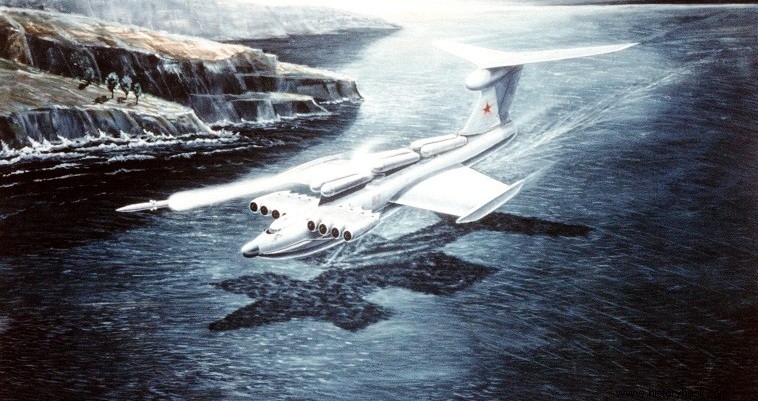
On the coast of the Caspian Sea, near the city of Derbend, Dagestan, lies abandoned an imposing Ekranoplane, a huge hybrid aircraft of the Soviet Union, also known as the "Caspian Monster", as the American secret services. The Ekraplane is a vehicle that looks like an airplane but its operation is based solely on the principle of ground effect. These vessels were originally developed by the Soviet Union as high-speed military transports and their bases were mainly on the shores of the Caspian and Black Seas.
The largest could carry more than 100 tons of cargo and was considered a brilliant combination of aviation and marine technology. Ground effect vehicles (GEV) fly over any flat surface, while their flight height above the ground depends on the size of the vehicle. The Soviets built several such hybrid aircraft, but they were to be used only for transporting equipment.
Only one was intended for combat. So this flying vehicle, something between a ship and a flying vehicle, is today abandoned on a shore of the Caspian Sea. The LUN-class Project 903 Ekranoplane was being transported from the Caspian Naval Base to Derbent to be displayed in a military museum. However, according to reports, it was damaged in transit, drifted out to sea, and is now still on the shore.
The Ekranoplane was built by the Soviets in 1986 and entered service with the Black Sea Fleet in 1987. The 903 Lun was the first and only Ekranoplane to function as a missile platform and was intended for combat. The Ekranoplane weighed 400 tons and had eight engines, while its lifting power of 1,000 tons ranks it among the largest ever achieved. The Lun class model had a top speed of 297 knots (550 km/h). The basic design principle of Ekraplanes is that the lift of the wing decreases as the Ekraplane's operating altitude increases (ground effect effect), which gives it dynamic vertical stability.
Once up to speed, the Ekraplane does not remain in contact with water and can move over ice, snow or flat ground with equal ease. During the Cold War, Ekraplanas appeared in the Caspian Sea as huge, fast objects. The name Caspian Sea Monster was given by members of the US intelligence services who spotted the huge vehicle, which looked like an airplane with parts of its wings removed. After the end of the cold war the "Monster" was identified as one of several Soviet military designs intended to fly a few meters above water, saving energy and remaining below the coverage height of enemy radars.
SOURCE:SPUTNIK
